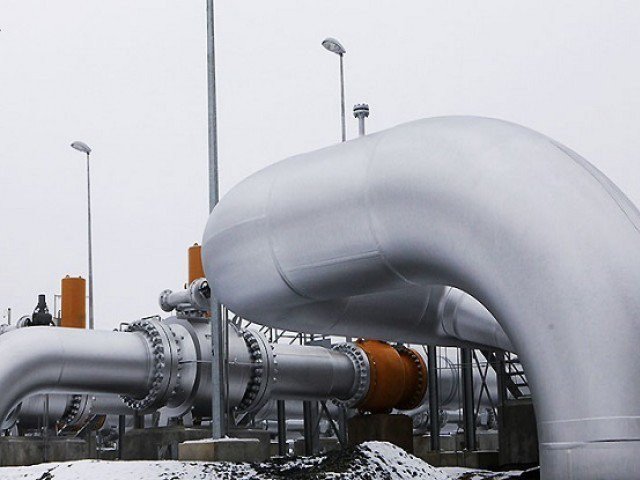
The monetary value of these losses has been estimated at around $800-900 million calculated at an opportunity cost rate of $6 per mmbtu of LNG prevailing price.
These losses can be reduced and savings to the tune of $500 million can be generated, if corrective measures are taken.
Considering the important yet contentious issue being a frequent subject of court litigation, the Oil and Gas Regulatory Authority (Ogra) recently commissioned a study by engaging consultants who have come out with extensive recommendations for dealing with the problem. These recommendations are nowadays subject of heated discussions within the gas industry.
LNG revolutionising Pakistan’s energy sector
Compared to the power sector where losses are around 20% now, gas sector losses used to hover around 7% which over the recent years have more than doubled to around 15%. Ogra has been allowing about 7-8% of these losses to the companies resulting in considerable loss of revenues and thus the litigation by the companies as mentioned earlier.
In the jargon of gas industry, such losses are called unaccounted for gas (UFG). We will be using these terms interchangeably in our discussion. Apart from monetary losses, these losses should be of extra concern as our local gas resources are dwindling.
Technical and operational losses
There are mainly two components of losses in both power and gas sector which are; technical, and operational.
Technical losses are those that may be reduced but not avoided altogether. In the power sector, it is what is called copper loss caused by the resistance of wires and cables. There is no equivalent to this in gas sector. The second part of technical losses is measuring errors, which in gas sector is more complicated.
Regulators have almost a thankless job of treading midway between the consumers and producers interest while ending up annoying or dissatisfying both. Economic efficiency argument can be a saviour of the regulator and in fact for all, if that criterion is used in addition to the usually political decisions. It is not an easy computation; therefore, one starts with comparing the loss (UFG).
In most developed economies, UFGs are around 2-3%,while in Bangladesh, Turkey and, astonishingly, Russia and Texas, UFGs are around 5%, a figure around which consensus seems to be emerging to be the reference in our case as well.
Certainly, the current level of UFG reflects a deplorable state of the gas industry, for which it alone is responsible. However, rejecting them without any help or assistance to come out of it would be counterproductive. High UFG results in higher tariff, which hurts domestic consumers’ pockets in a poor country and affects competitiveness in export markets.
Ministry, OGRA fail to agree on Uch field's gas price
Pakistan’s textile exports are allegedly suffering due to low gas prices prevailing in Bangladesh, although the party would be over in the latter country as its gas resources are also dwindling and it has started importing LNG at a price more than twice that of locally produced gas.
Consultants have grouped the losses (UFG) into the following seven categories; normal theft (by consumers and non-consumers); theft in poor law and order conditions and areas (in tribal areas and K-P, certain areas simply break the pipelines and supply gas to themselves making political claims on gas resources in and around areas where gas has been found and is being produced.
In my view, the major issue is the large geographical territories being controlled from headquarters in Karachi and Lahore. Consensus has been emerging that these two companies be divided into smaller companies’ like DISCOs in power sector.
In fact, there is a case for dividing Multan Electric Power Company and Peshawar Electric Supply Company having very large geographical territories under their command.
The issue has been complicated by additional proposals of separating transmission and distribution functions. The issue is further complicated by the nature of ownership; although the companies are majority government-owned, they are listed in stock exchanges, making companies’ assets division even more difficult.
Foreign consultants and IFIs meddling also complicates and even impedes implementation, otherwise, Shahid Khaqan Abbasi was of the opinion of implementing most of the urgent reforms and restructuring in six months, otherwise, as he believed the windows of opportunity do not extend over longer period of time. How prophetic he was as we see the unravelling political circumstances.
A common problem in both power and gas sector are inadequate control metering. Meters are to be there at all nodal points in order to be able to do control accounting. It is not enough to know the losses at company level; there has to be control metering for every small geographical segment, say, of 1,000 customers enabling the respective managers to know how much gas has been shipped and how much billing and receipts are there in their respective areas.
The difference can help identify and zero in on problem areas. Higher management can also order controls, investigations and campaigns based on such information. Incentive schemes can also be devised based on such data and information. Readers may be surprised to know that only 12% of 4058 TBS nodes are metered in SNGPL and 26% (out of 2442) in SSGC.
Besides, SNGPL also seem to lack in the number of TBS points as a percentage of the number of consumers. There may be a case for smart metering of these nodes as well, as we have argued elsewhere, in case of power sector, to start with installing smart meters on distribution transformers, in order to be able to implement a smaller and affordable programme in a shorter period of time. However, much improvement and control of theft is possible by simply covering all TBS points with meters.
Replacing leaking pipes and old meters and installing meters at all control points such as TBS requires money. Cash-starved companies cannot invest money and nobody lends to such failing companies. Hence, it may be advisable to provide a reasonable tariff and UFG allowance. However, it is a double edged sword.
A liberal UFG may provide further incentives, opportunities and market for company employees to collude with gas thieves. Hence, whatever be the UFG, it is to be accompanied by a programme of loss reduction and action plan that identifies activities that have to be done. And that is what consultants seem to have done in there study.
They have recommended a two part UFG allowance; 5% fixed and 4.05% variable under an action plan spreading over a period of five years. In the year 2015, SSGC had been awarded a UFG of 8.6 % and SNGPL of 7.1%. The proposed action plan consists of 25 actions, 15 of which are technical requiring investments and five are related with operational activities required for direct theft detection and control.
However, a few aspects are lacking in the consultant’s study (although, they are restricted by the TOR and the resources provided), in my view, and can still be undertaken.
Firstly, the investment requirements of the 15 proposed actions to enable the companies plan and to enable Ogra to provide some tariff incentive and assistance to the companies, if required; secondly, comparative economics of gas transmission and distribution activity is a must to be able to see the deficiencies in a perspective.
Russians and other investors have been demanding a tariff of $0.75 to $1 per 1000 cft for transmission pipelines alone. It would be useful to know and compare the T&D charges of gas companies with other companies in the world, making UFG allowance and concessions decisions a bit more objective and meaningful.
Thirdly, I wonder if it would have been possible to estimate the losses in each of the seven categories of losses identified, may be, three broad categories. This would have enabled target setting in terms of output as well as opposed to input based targets proposed by the consultants. Both targets have their own advantages and disadvantages.
Fourthly, it may be examined if unit rate tariff setting would be more advisable than the annual revenue requirements approach, the latter being the current practice. And as a special variant of the unit rate, a constant price tariff ie KE power tariff may be workable in a similar gas situation wherein loss reduction is to be incentivised.
KE constant price tariff (with provision for escalation and adjustments) developed by the Asian Development Bank (ADB) consultants, has worked well encouraging the utility to make investments for improving its thermal and operational efficiency. KE could also come out from red into a profitable venture.
Fifthly, gas is 35 times more injurious to climate change than ordinary CO2, which is a usual subject of discussion and mitigation. Leakage reduction programme could earn a continuous stream of revenues under CDM (Clean Development Mechanism) for the next 20 years, if leakage estimates and investments plan thereof could be worked out.
The writer has been until recently member energy of the Planning Commission
Published in The Express Tribune, October 9th, 2017.
Like Business on Facebook, follow @TribuneBiz on Twitter to stay informed and join in the conversation.

1723278472-0/BeFunky-collage-(4)1723278472-0-165x106.webp)


1719564405-0/BeFunky-collage-(19)1719564405-0-165x106.webp)

1732486769-0/image-(8)1732486769-0-270x192.webp)










COMMENTS
Comments are moderated and generally will be posted if they are on-topic and not abusive.
For more information, please see our Comments FAQ